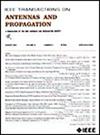三维空间中非线性传感器运动的多普勒效应:曲率、扭转、震动和定向波传播
IF 4.6
1区 计算机科学
Q1 ENGINEERING, ELECTRICAL & ELECTRONIC
引用次数: 0
摘要
传感器运动引起的信号失真估计是现代信号处理系统中的一个基本问题。标准多普勒分析通过假设系统中所有物体以恒定速度运动来估计信号失真。然而,现代系统日益增长的速度和复杂性要求了解传感器的一般三维运动是如何扭曲信号的。在这项工作中,我们建立并解释了由速度变化(即加速度和震动)和速度方向变化(即接收器路径的三维几何形状)引起的谱摄动,它们共同构成了任意非线性运动的构建块。恒定震动时,传输信号被非线性啁啾扭曲,导致频谱不均匀展宽,并在振幅谱中产生airy型振荡。我们确定了包含三维几何结构引起的非线性相位的传感器路径近似:螺旋和Frenet-Serret近似,分别产生正弦和三次相位信号。我们描述了频谱对曲率、扭转和波传播的相对方向对Frenet-Serret框架的依赖。本文章由计算机程序翻译,如有差异,请以英文原文为准。
Doppler Effects of Nonlinear Sensor Motion in 3-D Space: Curvature, Torsion, Jolts, and Directional Wave Propagation
The estimation of signal distortions caused by sensor movement is a fundamental problem in modern signal processing systems. Standard Doppler analysis estimates signal distortions by assuming that all objects in the system travel at a constant velocity. The increasing speed and complexity of modern systems, however, requires an understanding of how the general 3-D motion of the sensor distorts the signal. In this work, we establish and interpret the spectral perturbations caused by changes in speed, i.e., acceleration and jolt, and by changes in the direction of velocity, i.e., the 3-D geometry of the receiver path, which together form the building blocks of arbitrary nonlinear motion. For constant jolt, the transmitted signal is distorted by a nonlinear chirp, which results in nonuniform spectral broadening and can create Airy-type oscillations in the amplitude spectrum. We identify sensor path approximations that incorporate the nonlinear phases induced by the 3-D geometry: the helical and Frenet-Serret approximations, which result in sinusoidal and cubic phase signals, respectively. We characterize the dependence of the spectrum on curvature, torsion, and the relative direction of wave propagation to the Frenet-Serret frame.
求助全文
通过发布文献求助,成功后即可免费获取论文全文。
去求助
来源期刊
CiteScore
10.40
自引率
28.10%
发文量
968
审稿时长
4.7 months
期刊介绍:
IEEE Transactions on Antennas and Propagation includes theoretical and experimental advances in antennas, including design and development, and in the propagation of electromagnetic waves, including scattering, diffraction, and interaction with continuous media; and applications pertaining to antennas and propagation, such as remote sensing, applied optics, and millimeter and submillimeter wave techniques

 求助内容:
求助内容: 应助结果提醒方式:
应助结果提醒方式:


